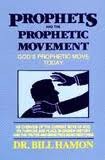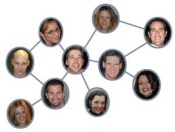 How Do You Prepare God’s People For Works of Service? Part V
How Do You Prepare God’s People For Works of Service? Part V
Even though every believer should do evangelism, most of us do not know how to do it or feel very awkward when trying to evangelize. Here are some tips:
- Natural Story Telling: Evangelism should be a natural response of just telling the story of our own spiritual journey. Often just telling how you met the Lord, what has comprised your spiritual journey, how your journey has become a lifestyle are all ways of evangelizing. I remember once when some friends were evangelizing, I just shared about how making Jesus Lord of my life and the power of the Holy Spirit had an impact on my spiritual walk. This left a dramatic impact on those I shared it with, and they not only made Jesus their Savior but also Lord and were willing to receive the Baptism in the Holy Spirit. Evangelism can be as simple as telling your personal story.
- Personal Evangelism: Evangelism is most effective when one on one. Even though we Christians spend millions on television and radio programs, one on one evangelism is still the most efficient and impactful method. There is nothing that beats personal contact, eye contact, and personal discussion and care.
- Building Relationships: Often building relationships of trust, respect, and care open doors for people to want to hear our stories, our message. Relationships are key to communications in the kingdom of God, and establishing them with unbelievers is of essence if we are to win them for Jesus.
- Outside The Walls: Evangelism should occur outside the walls of our church buildings. We need to quit relying on the Pastor and his staff to “give” an evangelism message through their sermons. Evangelistic sermons have their place and effectiveness, but should not be a substitute for our individual sharing with people in the work place, those we recreate with, our neighbors and friends.
- Vulnerability: Care is the best thing we can give an unbeliever. Everybody needs to feel cared for. If you build a relationship with a person who thinks you genuinely care for them, they will listen to you and believe that what you said is valid. Evangelism is all about care: Jesus cared so much for us as sinners that he was willing to lay down his life on the Cross for us. A key component to evangelism is your willingness to lay down your life for others, just not Christians, but non-Christians too. Only when you are willing to lay down your life and expose your life, will others become vulnerable and open up and expose their lives to you.
 - Stay Simple: Try to refrain from talking “Christian-eze”. Keep your message simple and sincere. Don’t talk down to them as if you are a saint, and they are an ain’t; talk face to face, eye to eye, peer to peer.
- Stay Simple: Try to refrain from talking “Christian-eze”. Keep your message simple and sincere. Don’t talk down to them as if you are a saint, and they are an ain’t; talk face to face, eye to eye, peer to peer.
-Win With Love: We often think of Bull Horn Evangelists with a Hell-Fire & Brimstone Condemnation message, emphasizing a need for a savior. What kind of God do we want to portray? What kind of God do we want to offer? True, there will be a judgment day, but we are living in an age of Grace, so we should extend grace, mercy, forgiveness, unconditional love, and a willingness to go the second mile in spit of who they are or how they act towards us. “Loving them into the kingdom” is far more effective, especially for their later spiritual growth, than scaring “the hell out of them”!
- Just Be Who You Are In Jesus; Be Genuine, Not A Hypocritical Phony: Two men hung on either side of Jesus. The three were peers as “condemned criminals”, but the one criminal recognized that Jesus was innocent; he had done no wrong, yet he was suffering the same fate as the two who had “earned” their death sentence. Jesus’ righteousness stood on its own, recognized by one of the criminals, rejected by the other. The one who acknowledged it was assured by Jesus to be with him in heaven, the other not. Don’t try to be some spiritual giant, someone who you are not; just be yourself in Jesus. Allow the Holy Spirit to use you and speak through you, and let the unbelievers whom you are a witness to draw their own conclusions. Hopefully it will be the same as the criminal who is with Jesus in heaven today.
 Hopefully these are some tips that can be useful in your journey toward evangelism, the telling of what Jesus is and has done in your life. Evangelism, like faith, is simple. Just be genuine, be yourself, be caring, and keep it simple.
Hopefully these are some tips that can be useful in your journey toward evangelism, the telling of what Jesus is and has done in your life. Evangelism, like faith, is simple. Just be genuine, be yourself, be caring, and keep it simple.



























































